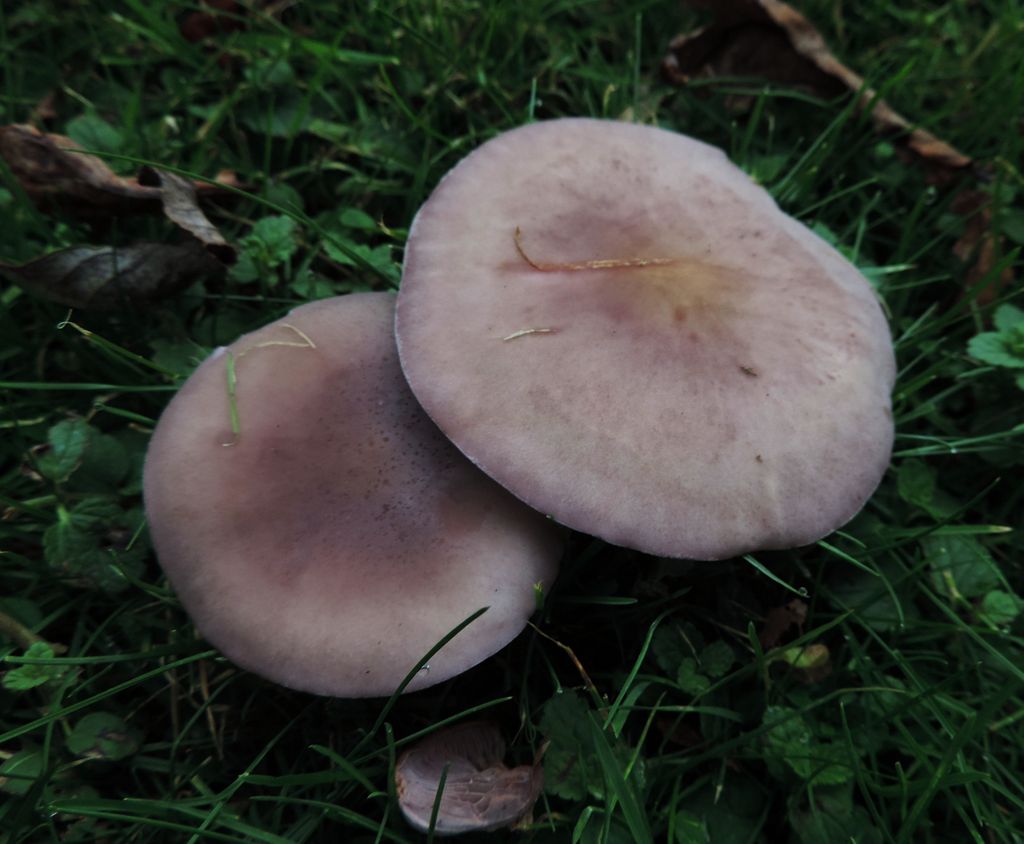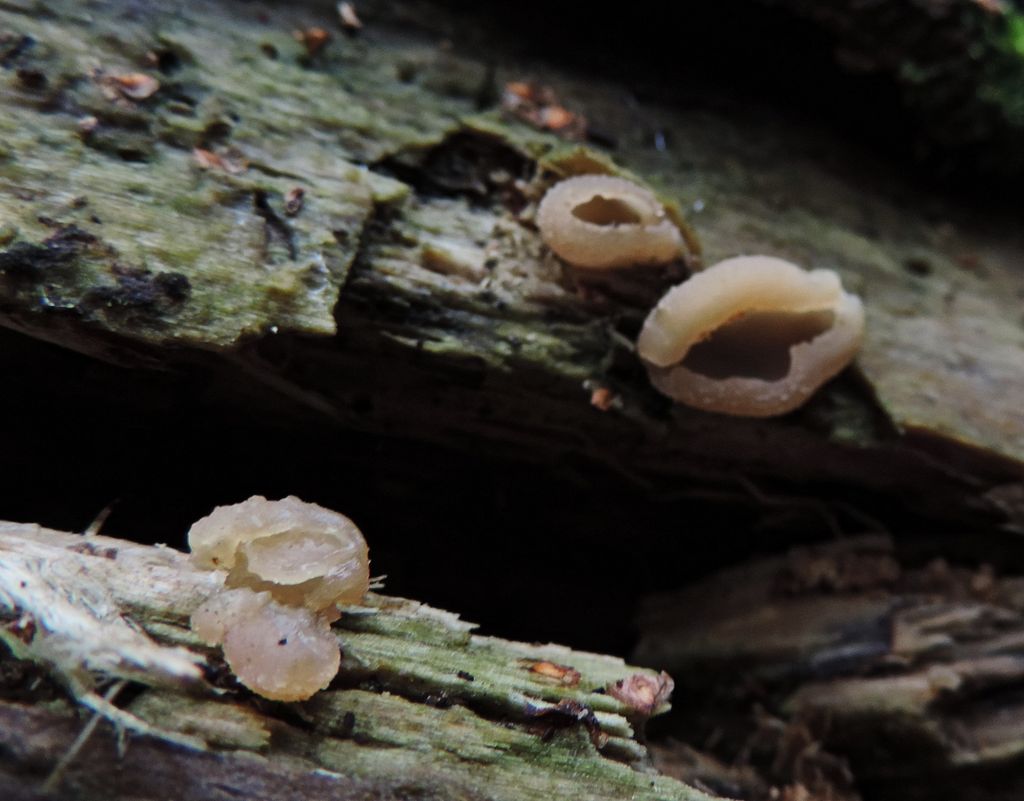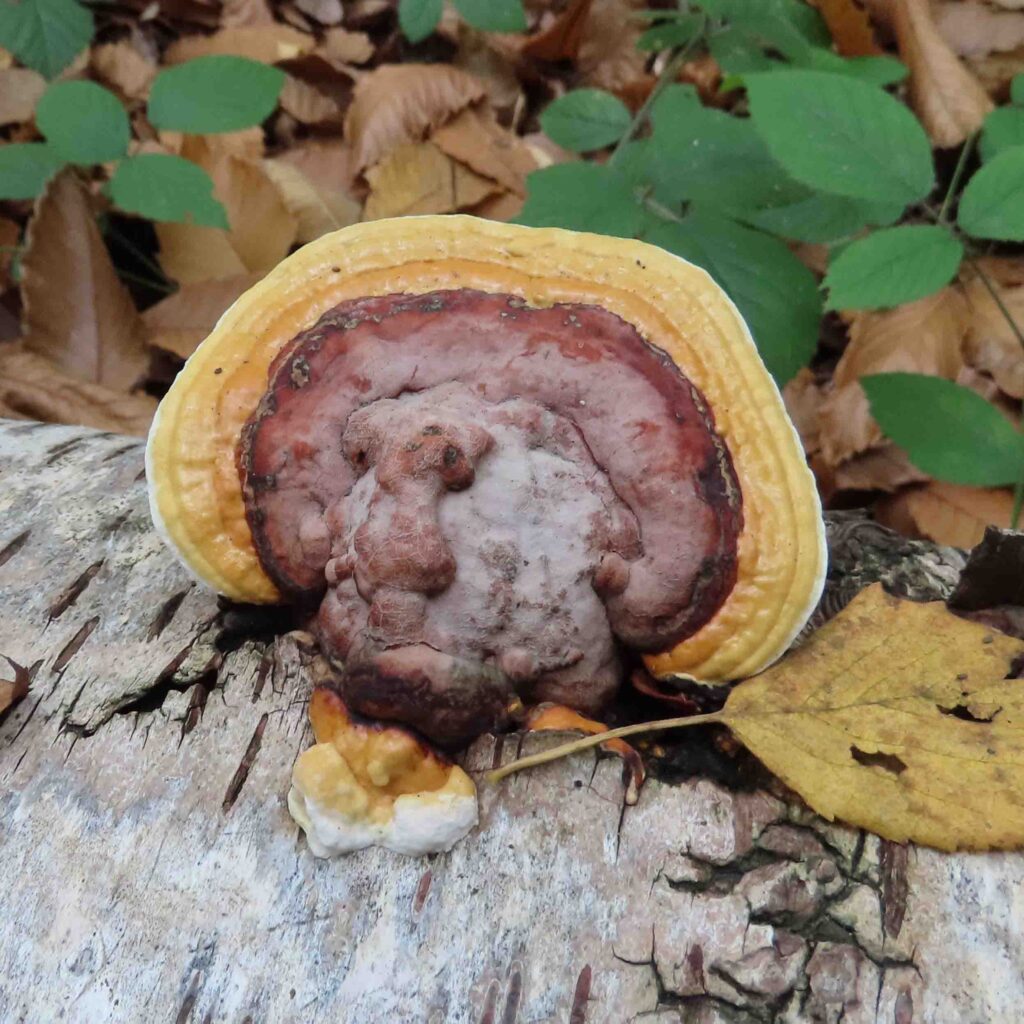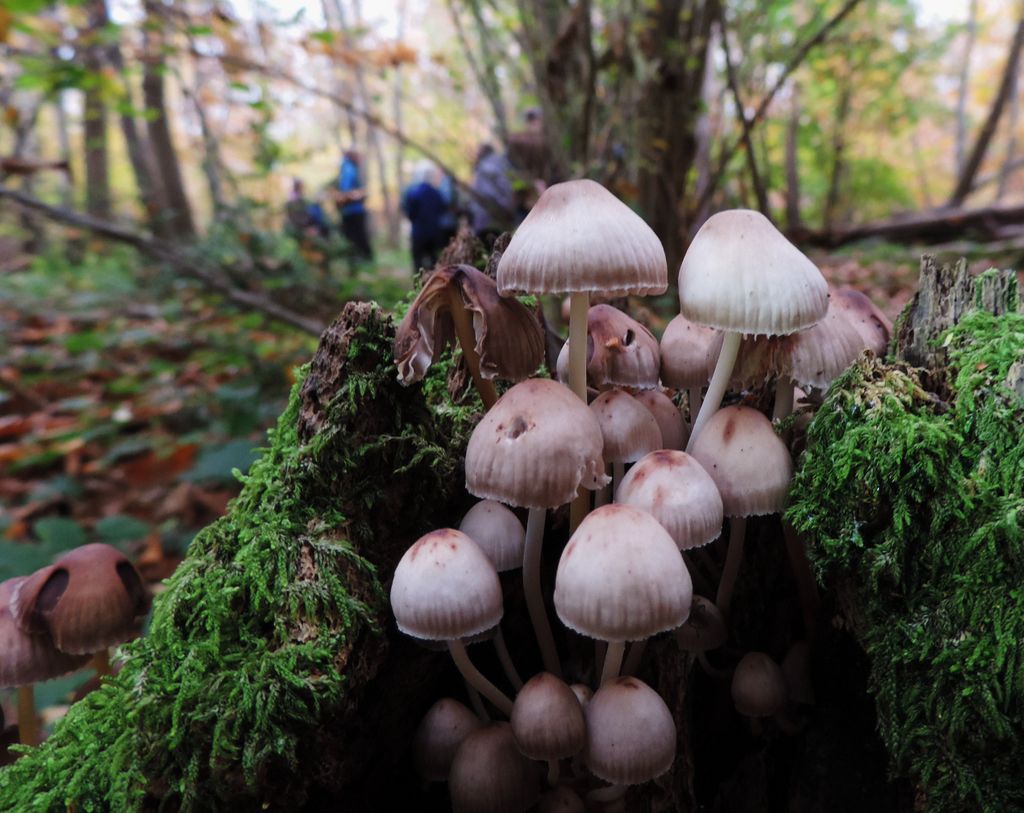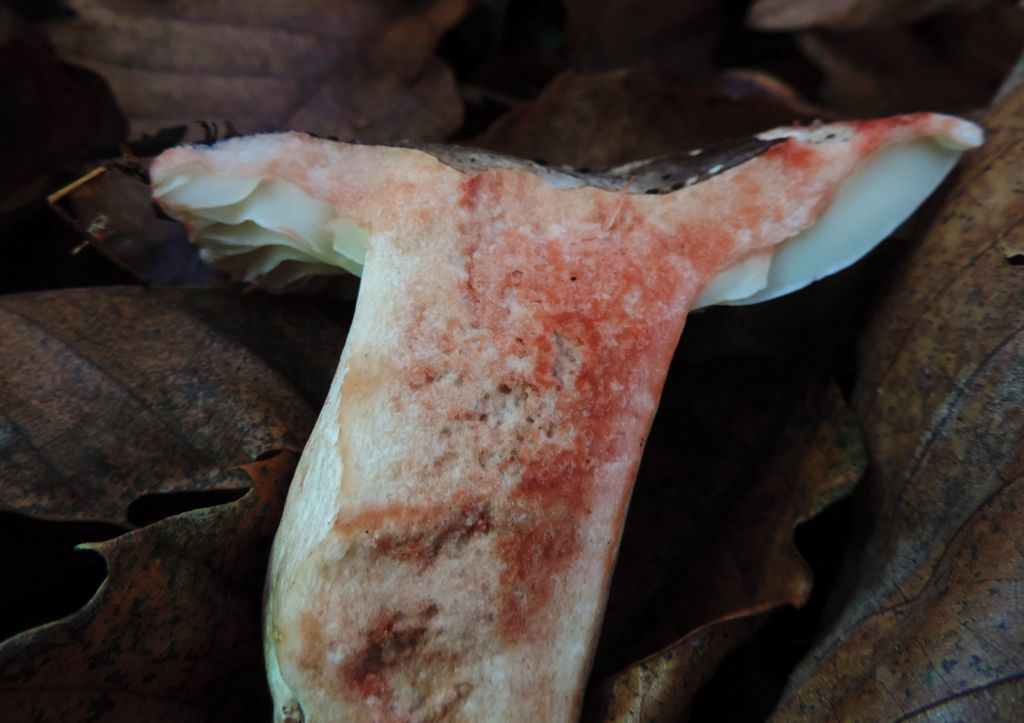Remembrance Sunday was an appropriate day to remember two former leaders of the Society’s fungus forays, Mike Waterman and Gordon Crutchfield, who had recently passed away. We were very grateful that Mike Harrison of the Thames Valley Fungus Group had kindly offered to lead this year’s fungus walk at Paices Wood Country Park, Aldermaston on the morning of Sunday 14 November. The grass around the car park area had been cut recently, which was a shame, because on a pre-walk earlier in the week, there had been significantly more fungi here. Despite this, a number of different species were found. An ivory-coloured Deceiver Laccaria laccata had widely-spaced pink gills. Orange rust on the underside of a Colt’s-foot leaf was Coleosporium tussilaginis. Bald Inkcap Parasola leiocephala had a grooved cap with a brown centre, Glistening Inkcap Coprinellus micaceus had a brown grooved cylindrical cap and Common Inkcap Coprinopsis atramentaria had an ivory-coloured ovoid cap. The latter species contains antabuse, which gives particularly unpleasant symptoms if consumed at the same time as alcohol. Towards the edge of the grassland, under a group of trees, were a number of specimens of the brownish-lilac Wood Blewit Lepista nuda. Then a single specimen of Yellow Fieldcap Bolbitius titubans was found.
The walk continued into a section of the woods which was dominated by Sweet Chestnut. Another Deceiver, this time a quite different-looking brown specimen, was found and an Amethyst Deceiver Laccaria amethystina was seen nearby. Candlesnuff Fungus Xylaria hypoxylon was growing on a dead stump and a number of Bonnet fungi were found on mossy branches of dead wood. A tuft of Milking Bonnet Mycena galopus exuded a white liquid when the stem was broken, while the stem of the Snapping Bonnet M. vitilis made an audible snapping sound when broken. Hairy Curtain Crust Stereum hirsutum was found on a fallen tree and Sulphur Tuft Hypholoma fasciculare was growing at the base of a nearby stump. A number of different bracket fungi were compared. The whitish pores on the underside of a Blushing Bracket Daedaleopsis confragosa on birch bruised a reddish colour, while the white pores of Lumpy Bracket Trametes gibbosa were slot-shaped and larger than those of Turkeytail T. versicolor. High overhead, two Nuthatches called from the tops of the trees. Further along the path was an impressive line of the large Trooping Funnel Infundibulicybe geotropa. A particularly productive fallen tree nearby was home to Smoky Bracket Bjerkandera adusta with a dark grey pore surface, Bitter Oysterling Panellus stipticus with an eccentric stem, Veiled Oyster Pleurotus dryinus and a few brown specimens of Pedicel Cup Peziza micropus. Honey Fungus Armillaria mellea nearby had a distinctive ring and a parasitic fungus on its base. A tuft of the Clustered Bonnet Mycena inclinata was found on a mossy stump, while another clump was infected by the fine hairs of Bonnet Mould Spinellus fusiger. A piece of rotting bark had the small orange blobs of a slime mould. Down amongst the leaf litter on the other side of track were Russet Toughshank Collybia dryophila and two more Brittlegills, the yellow Ochre Brittlegill Russula ochroleuca and a purple specimen.A fallen birch trunk nearby was host to a mystery bracket fungus. Its upper surface was glossy, with a dark reddish-brown base, surrounded by concentric yellow-orange grooves and with a pale outer margin. The pores on the underside were white. Mike returned the next day to take photographs and was able to confirm its identity as Red-belted Bracket Fomitopsis pinicola. There are only 49 records on the national database, with central southern England as its core area. On the walk back, Plicatura crispa, a small bracket-shaped fungus with gill-like folds on the underside, was found. Wet Rot Coniophora puteana was spreading across a dead stump. A Blackening Brittlegill Russula nigricans, with a dirty ivory cap and relatively large, chunky gills, was cut in half. The exposed stem turned slowly red and would eventually turn black. A drop of milk from a Birch Milkcap Lactarius tabidus was transferred to a white tissue, where it slowly turned yellow. Finally, a specimen of Scurfy Twiglet Tubaria furfuracea was found underneath a willow in the car park.
Pictures by Rob Stallard and Fiona Brown

